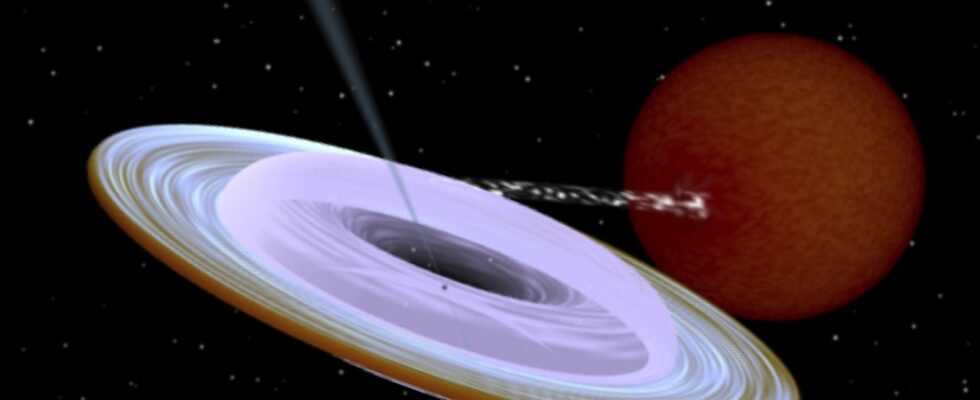When a massive star dies in a violent supernova, what is probably the strangest object in the universe is formed: a black hole. However, there are still discrepancies with this story, as a publication that has now appeared in the journal Science shows.
A group of astronomers led by Juri Poutanen from the Space Research Institute of the Russian Academy of Sciences and the KTH Royal Institute of Technology in Stockholm have measured a specimen around 10,000 light-years from Earth that does not behave as one would expect has accepted so far. The new observation therefore raises questions about the current understanding of how black holes form, write Ferdinando Patat and Michela Mapelli in an assessment accompanying the publication.
Black holes don’t have a surface like a planet or a star, instead they’re an area where matter has collapsed in on itself and condensed into an incredibly tiny volume. But like all other celestial bodies, black holes also rotate around their own axis; they can therefore be characterized primarily by means of two parameters: mass and rotational speed. Sometimes the gravity monsters – like planets and stars – are also part of a configuration of several objects held together by gravitational attraction.
In our solar system, for example, the planets move around the central star, or in a double star system, two stars rotate around each other. Similarly, the observed object has a moving partnership with a star. Such a constellation is one of the X-ray binaries, in which one star usually orbits a much more compact star – hence the name. The commonality of such systems is that the more massive object pulls material from its lighter companion. This creates a so-called accretion disk of matter that surrounds the star or the black hole and emits X-rays.
